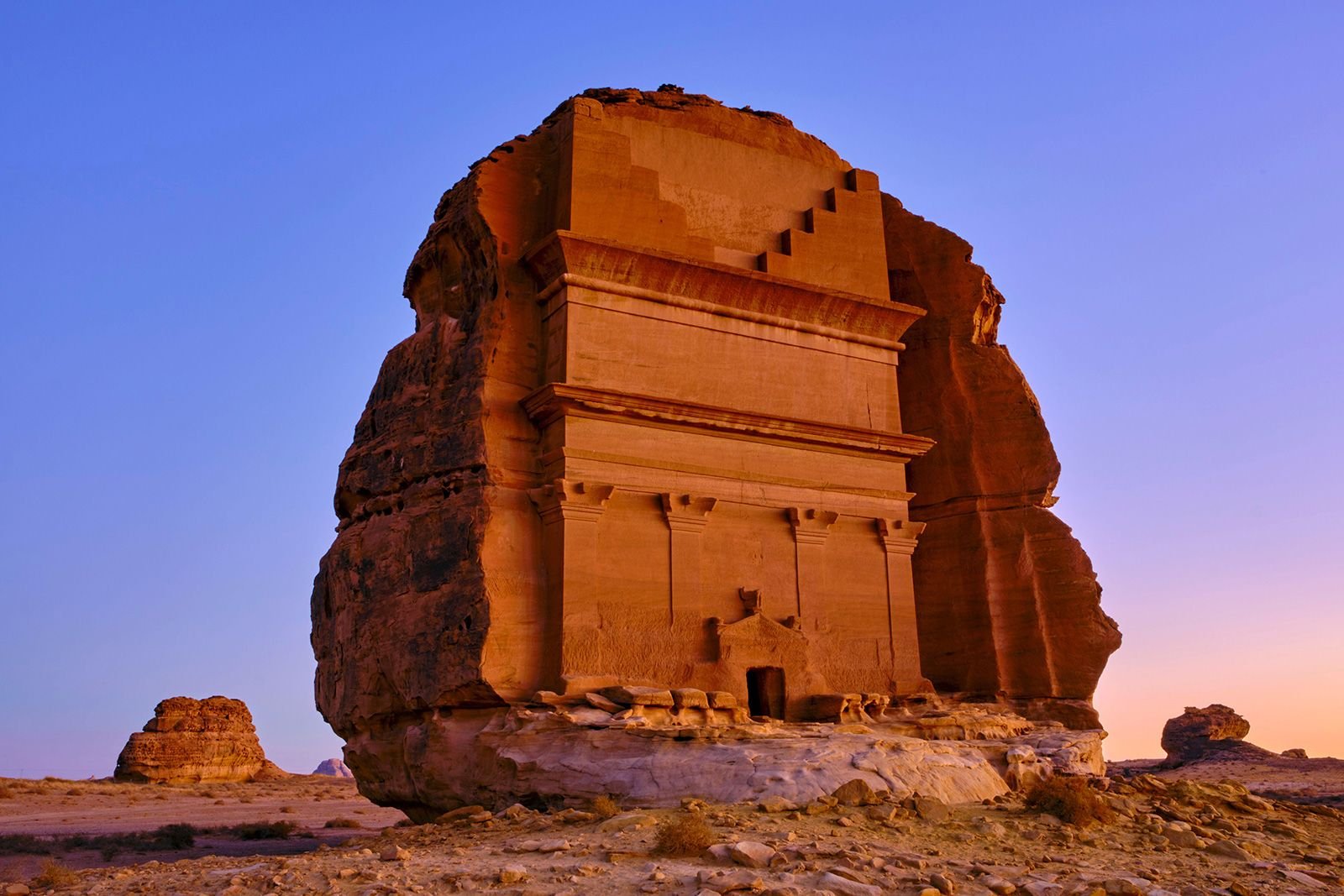In one of the world’s rapidly developing countries lies a hidden treasure, a monument carved into sandstone amidst date farms and dusty two-lane roads. This is Hegra, also known as al-Hijr or Mada’in Saleh, standing as the crown jewel of Saudi Arabia’s archaeological wonders and holding the distinction of being the first site in the country inscribed on the UNESCO World Heritage list.
Constructed between the first century BCE and the first century CE, Hegra is an ancient city featuring an impressive necropolis. Tombs, intricately carved into sandstone, grace the expansive desert landscape of northwestern Saudi Arabia. While Petra in Jordan is renowned as the capital of the Nabatean people, Hegra served as the kingdom’s southern outpost until its abandonment in the 12th century.
Despite its historical significance, Hegra remained largely inaccessible to international visitors until 2019 when Saudi Arabia began issuing tourist visas. Unlike Petra, which welcomed over a million visitors annually before the pandemic, Hegra is gradually gaining recognition, aided by the development of AlUla – a nearby oasis town evolving into an arts, culture, and tourism hub.
The Nabateans, believed to have traded in aromatics like incense and spices, left an enduring legacy. While much of their culture has faded from history, increased archaeological investment by the Saudi government is uncovering new information about Hegra and other Nabatean sites.
The Nabateans’ achievements, including their sophisticated system of cisterns in the desert and control of trade routes, are gaining recognition. Despite limited historical documentation, the Nabatean alphabet laid the foundations of modern Arabic, emphasizing their enduring impact on the region.
Recent developments have brought the Nabateans to life, with historians revealing the reconstructed face of a Nabatean woman named “Hinat” in early 2023. Travelers can now encounter her at the Hegra visitors’ center, adding a human dimension to the ancient civilization.

Upon arrival at the visitors’ center, guests are greeted with dates and cups of Saudi coffee before embarking on explorations in vintage midcentury-style Land Rovers. The absence of trees or structures at Hegra makes early morning or evening visits preferable to escape the intense midday sun.
The Nabateans, known as nomadic people, left behind around 115 known and numbered tombs at Hegra. Qasr al-Farid, the “lonely castle,” stands prominently, offering a dramatic backdrop against the desert. Visitors can explore the tombs, rotated to manage foot traffic, revealing intricate details around door frames, names of the buried, and design elements reflecting influences from distant cultures.
Many visitors extend their trip to include Dadan and Jabal Ikmah, smaller historic sites nearby. Jabal Ikmah, referred to as an “open-air library” by Saudis, features inscriptions in multiple languages, providing glimpses into the region’s rich history. Dadan, a pre-Islamic trading city, showcases the “Lion Tombs,” adorned with carvings of lions.
The official government-run tourism body, Experience AlUla, facilitates bookings for these sites, offering various tour durations. The region’s continued archaeological exploration, attracting experts from Petra, promises new discoveries and insights into the Nabatean civilization.
While Petra focuses on preservation and addresses over-tourism, Hegra stands poised to grow and captivate a global audience. Scholars like David Graf emphasize the cosmopolitan and sophisticated nature of the Nabateans, highlighting their dynamic interactions with Rome, the Greek world, and other cultures.
As more archaeologists relocate to Saudi Arabia, the narrative of the Nabateans is evolving, shedding the perception of a backward and primitive culture. Hegra’s rise as a tourist destination contributes to uncovering the rich tapestry of Nabatean history and its lasting impact on the world.
